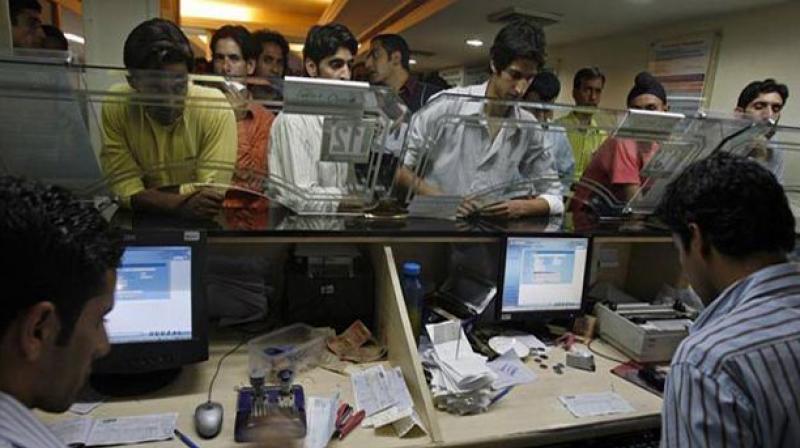It's crucial to protect small banks

A bank is an institution which accepts deposits and lends money for different purposes. The duty of a bank is to provide required capital for profitable business entities by collecting the deposits from individuals like you and me. As we are not equipped with certain set of skills to determine which business is going to profitable, we park our money with a bank which guarantees certain percentage of return on the capital we have provided. So, basically, even though we are depositing money into our accounts, we are indirectly providing capital to business entities. Most importantly, the moment one deposits money in a bank, he/she will become an unsecured creditor to bank. In simple terms, depositing money into a bank is like lending money to bank without holding any security.
So, what happens when a bank refuses to pay back your money? Or more importantly why a bank would refuse to pay your money back? Generally, the duration (average maturity) of banks’ assets (loans and advances) would always be higher than that of average duration of liabilities (deposits from customers). So, when panic hits and every depositor wants withdraw their money (which is technically called as ‘Bank Run’), banks will not be able to give back everybody’s money. During the crisis, everybody would try to withdraw their money from banks, resulting in failure of many banks. Due to interconnectedness of banking system, an economy can’t afford to have a failed bank. Failure of a financial institution, no matter how small a financial institution is, could potentially trigger a domino effect which could turn into a systemic risk. Lehman Brothers will testify to that. Hence, we came up with something called ‘too-big-to-fail’. So, no matter how worse they can get, the government will do whatever it takes to keep them afloat. So far, there is no rescue mechanism for a small financial institution which is failing.
To detect financial ailment in earlier stages and to support ailing entity in its revival, Financial Resolution and Deposit Insurance Bill (FRDI Bill) 2017 was approved by the Cabinet. The Bill enables a new regulator Resolution Corporation (RC). If a lender is healthy, role of RC is limited, but it would take active part in tandem with existing regulators in reviving a financial institution in case its health is poor. Appears like an all good deal, after all, saving a financial institution is vital for an economy and to you, isn’t it? Well, not so fast. There is something called ‘bail-in’ provision in the Bill, which could potentially give you nightmares.
Technically, if FRDI Bill is enacted and a financial institution is failing, RC can convert our deposits into equity or preference shares. That means, a bank can refuse to pay back your money or bank may issue securities as preference shares without any guarantee of fixed dividends. And, the newly injected capital (your money) will be used for the revival of the institution. There are few categories such as deposits covered under insurance, liabilities by virtue of holding client assets, obligations to central counter party, secured liabilities and liability owed to employees or workmen that can’t be bailed-in. And, none of those categories includes your deposits with the bank if you ignore the portion of your deposit covered by first one. So, is our money safe? Yes, with ‘almost’ certainty. Let me explain.
Under the current law, deposits up to Rs 1,00,000 is being insured by The Deposit Insurance and Credit Guarantee Corporation, and there is no security whatsoever for the deposits over and above Rs 1,00,000. So, hypothetically, if a bank is liquidated, one can only get back an amount up to Rs 1,00,000. Under the proposed law, any amount that was insured can’t be bailed-in. But the Bill fails to specify neither amount insured nor an amount depositor would be paid in case of liquidation. We are yet to know whether DICGC will be continued or the amount insured will remain the same. However, there is a safeguard under Section 55(2)(b) which clearly state ‘only those liabilities can be bailed-in whose contract says it can be bailed-in’. Currently, we don’t have any such contracts and our deposits can’t be bailed in. At the same time, Section 52 (b)(i) gives power to RC to modify the terms of a contract for existing liabilities which completely contrasts with Section 55(2)(b). We are yet to know which one supersedes the other.
Leaving the technical aspects aside, we have not seen a single big financial crisis in the last 70 years, thanks to strong regulatory guidelines. Though there may be failed financial institutions, which by its virtue different from a bank, depositors never lost money. Bank has to set aside 23.5 per cent of their total deposits in the form of SLR and CRR which are completely secure. Importance of timely resolution can’t be stressed enough in case of a failing entity. Though it may seem counter intuitive, bail-in is there is protect depositors’ interest. By converting deposits into equity, banks will have sufficient time to smoothen the liquidation process and to pay back depositors.

